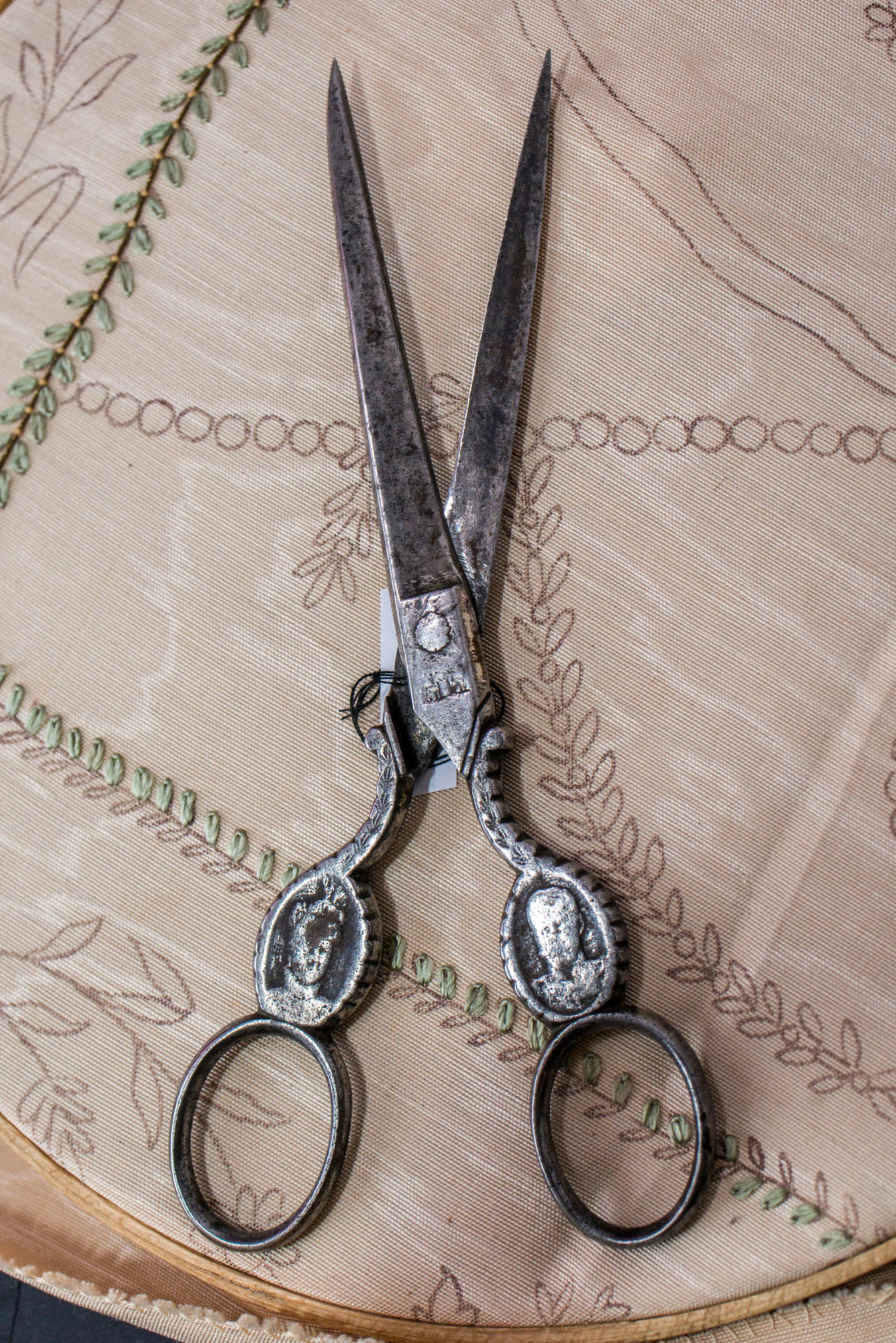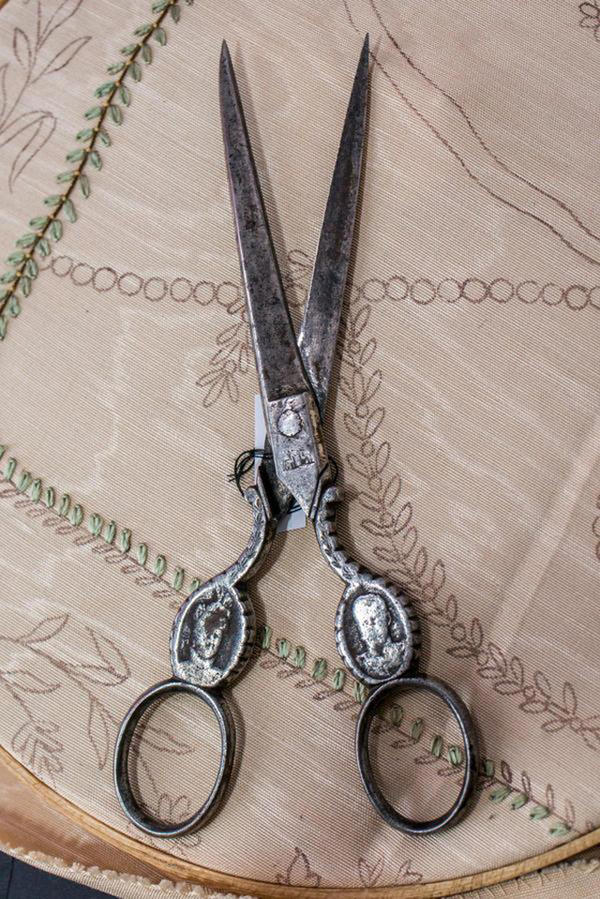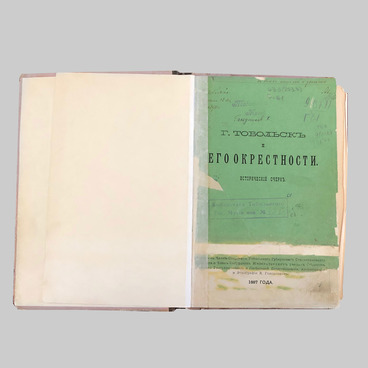A small series of sewing scissors with embossed pictures of the imperial couple was produced in 1896. They were made on the occasion of the coronation of Nicholas II and his wife Alexandra Feodorovna.
The two-sided embossed pictures of the monarchs were located on the scissors handle above the finger rings. The manufacturer’s stamp and the name of the German city of Solingen that was one of the largest centers of metal production in the 19th century were struck on the pivot area. At different times, they produced bladed weapons, kitchen knives, and shaving accessories in Solingen.
The coronation of Nicholas II took place in the Assumption Cathedral of the Moscow Kremlin on May 14, 1896. It became the last ceremony of this type in the history of the Russian Empire and one of the largest celebrations dedicated to the new monarch. In addition to the scissors with commemorative portraits, other valuable souvenirs were also made for the occasion including commemorative coins and medals “In memory of the coronation of Nicholas II on May 14, 1896”. In 1897, the famous jeweler Carl Fabergé made one of his most famous works, the Imperial Coronation egg. The egg was made to commemorate Empress Alexandra Feodorovna. The golden egg decorated with diamonds, rock crystal, and red enamel was an exact copy of the coach that carried the Emperor and his wife to the place of coronation.
The first coronation scissors appeared in Germany in the 19th century. They were made to commemorate important events that happened in the royal family, e.g., the jubilee of the current monarch’s reign, proclamation of a new heir, his wedding or accession to the throne. Sometimes such memorable things were made to commemorate a monarch’s visit from another country.
One of the most famous products of this type was the coronation scissors produced by the silver wedding anniversary of Kaiser Wilhelm II and his wife Augusta Victoria. Their nickel-plated handles were decorated with struck profiles of the monarch couple facing each other. These scissors were produced in a small series in 1906. They were designed for various household needs and could be used to cut paper, fabric, and threads.
The two-sided embossed pictures of the monarchs were located on the scissors handle above the finger rings. The manufacturer’s stamp and the name of the German city of Solingen that was one of the largest centers of metal production in the 19th century were struck on the pivot area. At different times, they produced bladed weapons, kitchen knives, and shaving accessories in Solingen.
The coronation of Nicholas II took place in the Assumption Cathedral of the Moscow Kremlin on May 14, 1896. It became the last ceremony of this type in the history of the Russian Empire and one of the largest celebrations dedicated to the new monarch. In addition to the scissors with commemorative portraits, other valuable souvenirs were also made for the occasion including commemorative coins and medals “In memory of the coronation of Nicholas II on May 14, 1896”. In 1897, the famous jeweler Carl Fabergé made one of his most famous works, the Imperial Coronation egg. The egg was made to commemorate Empress Alexandra Feodorovna. The golden egg decorated with diamonds, rock crystal, and red enamel was an exact copy of the coach that carried the Emperor and his wife to the place of coronation.
The first coronation scissors appeared in Germany in the 19th century. They were made to commemorate important events that happened in the royal family, e.g., the jubilee of the current monarch’s reign, proclamation of a new heir, his wedding or accession to the throne. Sometimes such memorable things were made to commemorate a monarch’s visit from another country.
One of the most famous products of this type was the coronation scissors produced by the silver wedding anniversary of Kaiser Wilhelm II and his wife Augusta Victoria. Their nickel-plated handles were decorated with struck profiles of the monarch couple facing each other. These scissors were produced in a small series in 1906. They were designed for various household needs and could be used to cut paper, fabric, and threads.



